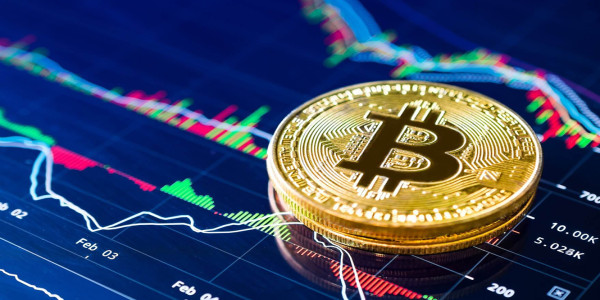
The Future of Coin Swapping: Trends Every Crypto Trader Should Watch
Introduction
Coin swapping has already transformed crypto trading by enabling seamless, fast exchanges without relying on traditional order books or fiat gateways. But the technology and ecosystem around swapping continue to evolve rapidly. For traders aiming to stay ahead, understanding emerging trends is crucial.
This blog explores key developments shaping the future of coin swapping — from cross-chain interoperability and Layer 2 scaling to AI-driven trade optimization and regulatory impacts — and how traders can prepare to leverage these changes.
1. Cross-Chain and Multi-Chain Swapping: Breaking Silos
Currently, most swaps happen within a single blockchain ecosystem, limiting access to assets on other chains. Cross-chain swapping protocols are bridging this gap, enabling:
-
True interoperability: Swap tokens across Ethereum, BSC, Solana, Avalanche, and more in one seamless process.
-
Access to wider liquidity: Aggregating pools across chains to reduce slippage.
-
Examples: Thorchain, Cosmos IBC, LayerZero.
Why traders care: More assets and opportunities become accessible, expanding trading horizons and arbitrage strategies.
2. Layer 2 Scaling and Gas Fee Optimization
High gas fees on major blockchains like Ethereum have been a persistent pain point. Layer 2 solutions (Optimism, Arbitrum, zkSync) provide faster and cheaper swaps by handling transactions off-chain.
-
Impact: Traders can execute frequent, smaller swaps without prohibitive costs.
-
Growing adoption: More DEXs and wallets are integrating Layer 2 swapping options.
3. AI and Algorithmic Trading Meets Coin Swapping
Artificial intelligence and machine learning increasingly power crypto trading bots and swap optimizers.
-
Smart routing: AI algorithms analyze vast pools and routes to find optimal swaps.
-
Predictive swaps: Bots anticipate market moves and execute swaps preemptively.
-
Risk management: Real-time analytics adjust slippage and size dynamically.
4. Decentralized Autonomous Organizations (DAOs) and Community Swapping
Governance tokens and DAOs influence swapping platforms, incentivizing user participation and liquidity provision.
-
Governance rewards: Traders can earn rewards by swapping or providing liquidity.
-
Community-driven improvements: Protocol upgrades are voted on by token holders.
5. Regulation and Compliance: What Traders Need to Watch
As coin swapping grows, regulators scrutinize DeFi and swapping platforms.
-
Possible impacts: KYC/AML requirements, restrictions on certain token swaps, reporting obligations.
-
Trader advice: Use compliant platforms when required, stay informed about jurisdictional rules.
6. Enhanced User Experience and Integration
Seamless wallet integrations, one-click swaps, and multi-chain portfolio management tools are making swapping accessible to more traders.
-
Mobile-first swapping: Apps with easy swaps on-the-go.
-
Multi-wallet support: Swap from hardware, software, and custodial wallets.
-
Unified dashboards: Track swap history, prices, and portfolio in one place.
Conclusion
The future of coin swapping is vibrant and packed with innovation. Traders who keep pace with cross-chain interoperability, Layer 2 scaling, AI integration, and regulatory changes will be best positioned to capitalize on emerging opportunities.
Coin swapping is evolving beyond a simple tool into a foundational technology that will define how crypto trading unfolds in the years ahead.
Share This Post
Introduction
Coin swapping has already transformed crypto trading by enabling seamless, fast exchanges without relying on traditional order books or fiat gateways. But the technology and ecosystem around swapping continue to evolve rapidly. For traders aiming to stay ahead, understanding emerging trends is crucial.
This blog explores key developments shaping the future of coin swapping — from cross-chain interoperability and Layer 2 scaling to AI-driven trade optimization and regulatory impacts — and how traders can prepare to leverage these changes.
1. Cross-Chain and Multi-Chain Swapping: Breaking Silos
Currently, most swaps happen within a single blockchain ecosystem, limiting access to assets on other chains. Cross-chain swapping protocols are bridging this gap, enabling:
-
True interoperability: Swap tokens across Ethereum, BSC, Solana, Avalanche, and more in one seamless process.
-
Access to wider liquidity: Aggregating pools across chains to reduce slippage.
-
Examples: Thorchain, Cosmos IBC, LayerZero.
Why traders care: More assets and opportunities become accessible, expanding trading horizons and arbitrage strategies.
2. Layer 2 Scaling and Gas Fee Optimization
High gas fees on major blockchains like Ethereum have been a persistent pain point. Layer 2 solutions (Optimism, Arbitrum, zkSync) provide faster and cheaper swaps by handling transactions off-chain.
-
Impact: Traders can execute frequent, smaller swaps without prohibitive costs.
-
Growing adoption: More DEXs and wallets are integrating Layer 2 swapping options.
3. AI and Algorithmic Trading Meets Coin Swapping
Artificial intelligence and machine learning increasingly power crypto trading bots and swap optimizers.
-
Smart routing: AI algorithms analyze vast pools and routes to find optimal swaps.
-
Predictive swaps: Bots anticipate market moves and execute swaps preemptively.
-
Risk management: Real-time analytics adjust slippage and size dynamically.
4. Decentralized Autonomous Organizations (DAOs) and Community Swapping
Governance tokens and DAOs influence swapping platforms, incentivizing user participation and liquidity provision.
-
Governance rewards: Traders can earn rewards by swapping or providing liquidity.
-
Community-driven improvements: Protocol upgrades are voted on by token holders.
5. Regulation and Compliance: What Traders Need to Watch
As coin swapping grows, regulators scrutinize DeFi and swapping platforms.
-
Possible impacts: KYC/AML requirements, restrictions on certain token swaps, reporting obligations.
-
Trader advice: Use compliant platforms when required, stay informed about jurisdictional rules.
6. Enhanced User Experience and Integration
Seamless wallet integrations, one-click swaps, and multi-chain portfolio management tools are making swapping accessible to more traders.
-
Mobile-first swapping: Apps with easy swaps on-the-go.
-
Multi-wallet support: Swap from hardware, software, and custodial wallets.
-
Unified dashboards: Track swap history, prices, and portfolio in one place.
Conclusion
The future of coin swapping is vibrant and packed with innovation. Traders who keep pace with cross-chain interoperability, Layer 2 scaling, AI integration, and regulatory changes will be best positioned to capitalize on emerging opportunities.
Coin swapping is evolving beyond a simple tool into a foundational technology that will define how crypto trading unfolds in the years ahead.